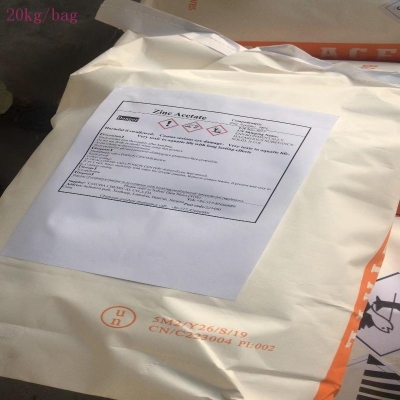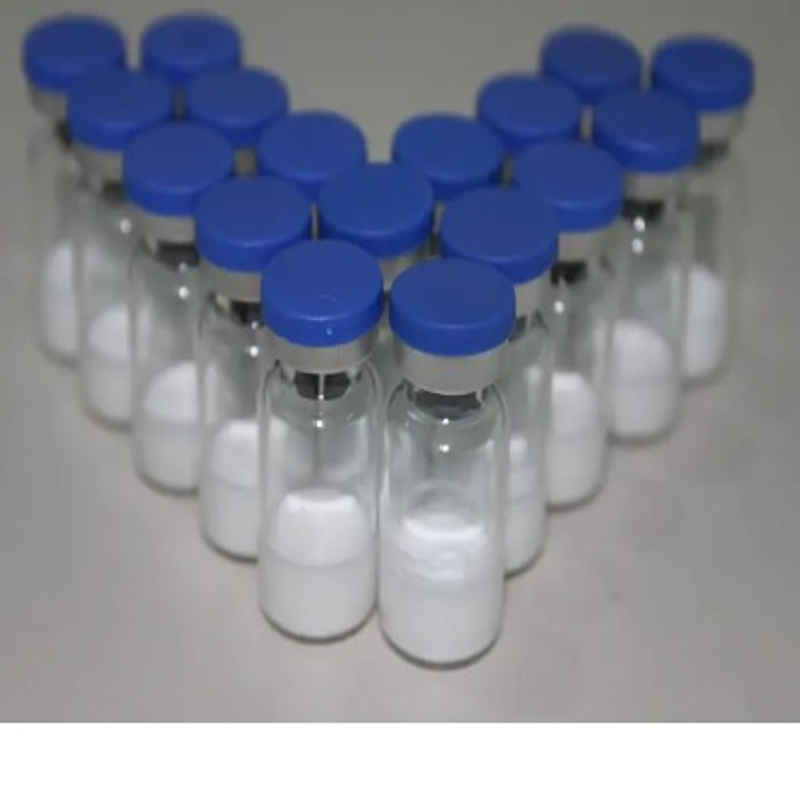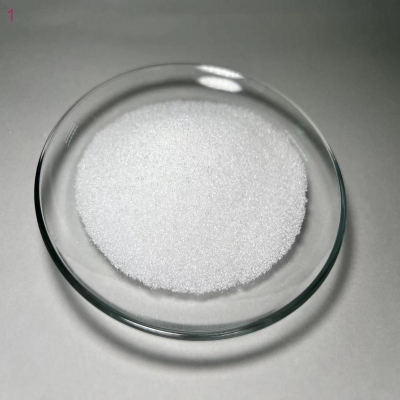-
Categories
-
Pharmaceutical Intermediates
-
Active Pharmaceutical Ingredients
-
Food Additives
- Industrial Coatings
- Agrochemicals
- Dyes and Pigments
- Surfactant
- Flavors and Fragrances
- Chemical Reagents
- Catalyst and Auxiliary
- Natural Products
- Inorganic Chemistry
-
Organic Chemistry
-
Biochemical Engineering
- Analytical Chemistry
-
Cosmetic Ingredient
- Water Treatment Chemical
-
Pharmaceutical Intermediates
Promotion
ECHEMI Mall
Wholesale
Weekly Price
Exhibition
News
-
Trade Service
"I started to adjust the structure last year and planted more than 3,000 acres of fresh corn.
This year I will continue to adjust and plan to expand to 10,000 acres!" Speaking of this year's spring plowing production, Fu Haiwei stated his new principle-"Follow the market.
go".
Lao Fu is the chairman of the modern agricultural agricultural machinery cooperative in Dongguan Town, Shuangcheng District, Harbin, Heilongjiang.
This cooperative is a state-level regulated cooperative, and its cultivated area reached more than 30,000 mu at one time.
To live up to the springtime, people earn money diligently.
In the yard of the cooperative, the large planters, soil preparation machines, and tractors that have been overhauled are lined up, waiting to be put into the busy spring farming.
“In 2015, the country also implemented a temporary storage corn policy.
As long as the corn grown by farmers meets the quality requirements, the grain depot can harvest it.
” Speaking of the time, Fu Haiwei felt very relaxed, “There is almost no worry about selling, and the price is not bad.
” However, the corn harvest has been harvested year after year and the imported corn has continued to grow, resulting in great pressure on the inventory.
This is the so-called strange phenomenon of "all three increases" in output, imports, and inventory.
The country collects a lot, the market cannot sell it, and farmers cannot get clear market information and continue to expand the corn planting area.
The "weird circle" is getting bigger and bigger.
In 2016, the No.
1 document of the Central Committee proposed that the reform of the corn purchasing and storage system should be actively and steadily promoted in accordance with the principle of market pricing and separation of price compensation.
In the same year, the Northeast China changed its temporary reserve policy to market-oriented purchases and subsidies, which meant that most corn sales in Northeast China would go to the market, and the state would no longer "underwrite.
" This year, Laofu’s cooperative greatly reduced the area of corn kernels and planted more than 3,000 acres of fresh corn and more than 3,000 acres of silage corn.
In the autumn, the grain corn used for processing by the enterprise earns more than 100 yuan per acre, the silage corn used for feed earns more than 200 yuan, and the fresh corn earns 600 to 700 yuan.
Heilongjiang is the largest province in grain production in the country.
This year, the province plans to continue to reduce the grain corn area by 10 million mu and vigorously develop 10 million mu of specialty crops such as vegetables and fresh corn through "stabilizing grain, optimizing economy, and expanding feed".
For farmers, it is not the figures on paper that increase or decrease but the actual income.
Fu Haiwei was thinking about how to adjust the planting varieties according to market demand.
After a small test last year, he is optimistic about the fresh corn market and plans to do a big job this year.
"We are not following the trend and making adjustments blindly, but we have already found the market in advance and signed an order for 10,000 mu of fresh corn with a southern enterprise.
" Lao Fu said, "You can no longer follow the old path.
In the past, farming relied on the country.
Now farm and watch the market! Develop distinctive grains, miscellaneous beans, oils with unique flavors, geographical indication products, etc.
according to local conditions, and expand efficient supply.
Although not pursuing excessive production, it is necessary to ensure the increase in production capacity.
This is the connotation of the new national food security strategy.
In this regard, the state will increase investment in the construction of high-standard farmland, focusing on the main grain-producing areas, prioritizing the construction of high-standard grain fields, and ensuring the completion of 800 million acres by 2020, and striving to build 1 billion acres of high-standard farmland for drought and flood protection.
On the other hand, the implementation of cultivated land quality protection and improvement actions, focusing on soil improvement, fertility, nutrient balance, and quality restoration, classification guidance, divisional promotion, and improvement of the inherent quality of cultivated land, so as to "store grain in the ground".
Agricultural supply-side structural reform.
This new agricultural reform started in 2015.
It has been solved since last year.
It is now widely carried out and advanced in various places.
It is expected that this year will harvest greater reform results and explore more new developments.
practice.
This year I will continue to adjust and plan to expand to 10,000 acres!" Speaking of this year's spring plowing production, Fu Haiwei stated his new principle-"Follow the market.
go".
Lao Fu is the chairman of the modern agricultural agricultural machinery cooperative in Dongguan Town, Shuangcheng District, Harbin, Heilongjiang.
This cooperative is a state-level regulated cooperative, and its cultivated area reached more than 30,000 mu at one time.
To live up to the springtime, people earn money diligently.
In the yard of the cooperative, the large planters, soil preparation machines, and tractors that have been overhauled are lined up, waiting to be put into the busy spring farming.
“In 2015, the country also implemented a temporary storage corn policy.
As long as the corn grown by farmers meets the quality requirements, the grain depot can harvest it.
” Speaking of the time, Fu Haiwei felt very relaxed, “There is almost no worry about selling, and the price is not bad.
” However, the corn harvest has been harvested year after year and the imported corn has continued to grow, resulting in great pressure on the inventory.
This is the so-called strange phenomenon of "all three increases" in output, imports, and inventory.
The country collects a lot, the market cannot sell it, and farmers cannot get clear market information and continue to expand the corn planting area.
The "weird circle" is getting bigger and bigger.
In 2016, the No.
1 document of the Central Committee proposed that the reform of the corn purchasing and storage system should be actively and steadily promoted in accordance with the principle of market pricing and separation of price compensation.
In the same year, the Northeast China changed its temporary reserve policy to market-oriented purchases and subsidies, which meant that most corn sales in Northeast China would go to the market, and the state would no longer "underwrite.
" This year, Laofu’s cooperative greatly reduced the area of corn kernels and planted more than 3,000 acres of fresh corn and more than 3,000 acres of silage corn.
In the autumn, the grain corn used for processing by the enterprise earns more than 100 yuan per acre, the silage corn used for feed earns more than 200 yuan, and the fresh corn earns 600 to 700 yuan.
Heilongjiang is the largest province in grain production in the country.
This year, the province plans to continue to reduce the grain corn area by 10 million mu and vigorously develop 10 million mu of specialty crops such as vegetables and fresh corn through "stabilizing grain, optimizing economy, and expanding feed".
For farmers, it is not the figures on paper that increase or decrease but the actual income.
Fu Haiwei was thinking about how to adjust the planting varieties according to market demand.
After a small test last year, he is optimistic about the fresh corn market and plans to do a big job this year.
"We are not following the trend and making adjustments blindly, but we have already found the market in advance and signed an order for 10,000 mu of fresh corn with a southern enterprise.
" Lao Fu said, "You can no longer follow the old path.
In the past, farming relied on the country.
Now farm and watch the market! Develop distinctive grains, miscellaneous beans, oils with unique flavors, geographical indication products, etc.
according to local conditions, and expand efficient supply.
Although not pursuing excessive production, it is necessary to ensure the increase in production capacity.
This is the connotation of the new national food security strategy.
In this regard, the state will increase investment in the construction of high-standard farmland, focusing on the main grain-producing areas, prioritizing the construction of high-standard grain fields, and ensuring the completion of 800 million acres by 2020, and striving to build 1 billion acres of high-standard farmland for drought and flood protection.
On the other hand, the implementation of cultivated land quality protection and improvement actions, focusing on soil improvement, fertility, nutrient balance, and quality restoration, classification guidance, divisional promotion, and improvement of the inherent quality of cultivated land, so as to "store grain in the ground".
Agricultural supply-side structural reform.
This new agricultural reform started in 2015.
It has been solved since last year.
It is now widely carried out and advanced in various places.
It is expected that this year will harvest greater reform results and explore more new developments.
practice.







